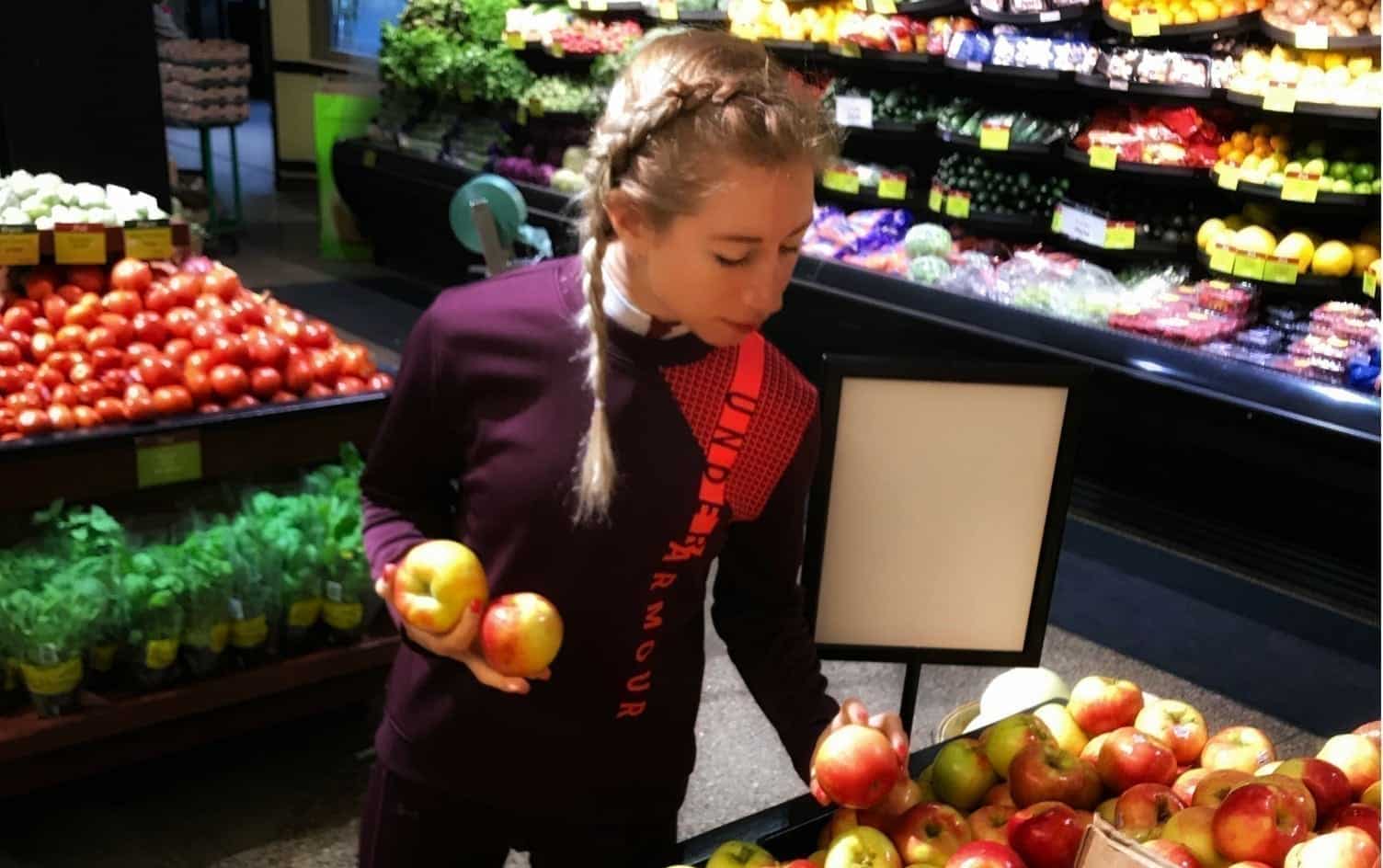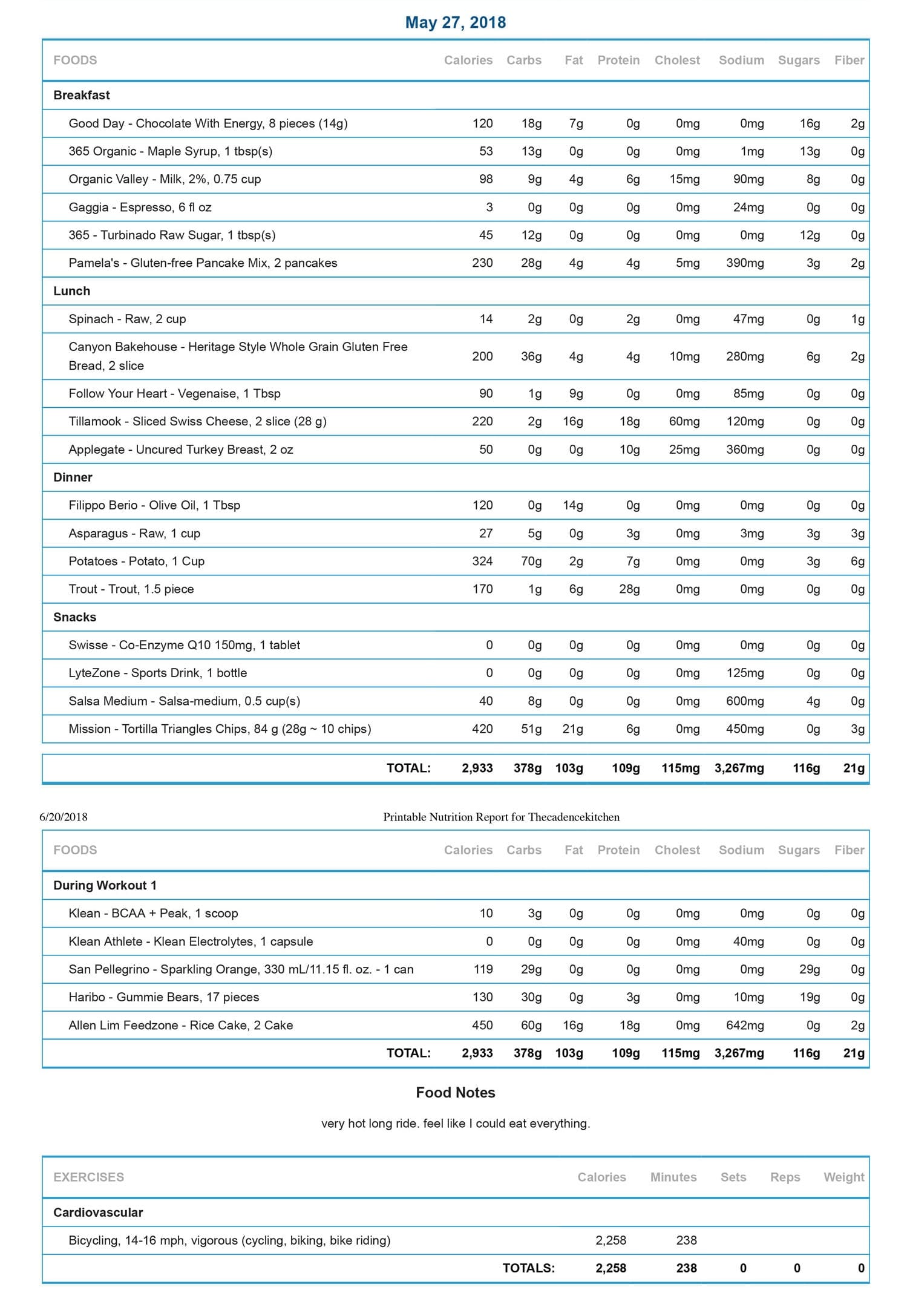As a dietitian working one-on-one with clients, I often prescribe the act of tracking food and beverage intake for many reasons. This helps establish a baseline of eating habits and a starting point for where to make adjustments and improvements to one’s diet. While I acknowledge this act as helpful, useful and important in the nutrition counseling process, I personally avoided the task. Sure, I have a MyFitnessPal account. I log in often to check on others and occasionally, I’ll even log a day here or there for myself. However, my account lacked extended, consistent tracking. To see what I’d gain from the act, I committed to a full week of logging my intake and here’s what I learned:
LESSONS LEARNED
1. I got a refresher in nutrition knowledge.
Logging my intake in MyFitnessPal provided me with upfront data of what that particular food, meal or drink was providing my body. After the week was over, I felt more confident in picking food combinations that would supply the balance my body needs. The database also provides standard serving sizes to choose from, which was a nice little reminder of what amounts are typically appropriate for each food.
2. It’s more tedious than I expected, but only at first.
Sad truth: Tracking your every bite takes time and effort. Luckily, this task becomes easier with time and experience. The more frequently I was able to log in and record a bit of data, the easier the daily load was. I found the most success by leaving the app open on my desktop throughout the day and recording frequently (mostly after each meal) to stay honest and accurate. Also, the more I logged, the easier it was to pick the foods I was consuming as they’d automatically show up in my recent database without extra searching.
3. I record more than food and drink.
Jotting down my every bite and sip meant little without context. Did I feel energized? Did the workout go well? Was I hungry? Full? Bloated? All of these factors contribute to the overall picture of health, wellness and how my lifestyle is so closely connected to what I consume. I used the ‘notes’ section of my tracker app to jot down these details.
4. It kept me accountable with supplements.
I’m one of those people who start taking a vitamin or supplement and by day 3 have totally forgotten about it. Thinking through what I consumed all day reminded me of the little extras, like taking my Swisse Wellness Co-Enzyme Q10 and dose of B12.
5. I simplified.
As I mentioned before, tracking is tedious. It’s worse if you make a homemade meal with 30 ingredients, which I tend to do. To avoid the task of adding each ingredient in approximately accurate portions, I began eating more repetitive meals with fewer ingredients. Not only did this help me stick to logging, but it saved on my grocery bill, time spent in the kitchen and lessened the burden of ‘what to eat’ thoughts that plague my mind constantly.
6. I eat more fat than I should.
My daily fat intake goal is set at 25%. At the end of the week, I found I was a little high on fat intake each day. Is this a bad thing? Well, it means I’m either consuming an excess of calories or too few of another macronutrient. In my case, I typically under consumed carbohydrates. Shocking right?! I am in no way opposed to eating carbs, but the salads and veggie-loaded meals I eat tend to be lower in carbs and higher in fats from the cooking oil or dressings I used. Going forward, I’ll be watching my carb intake (especially during workouts) to make sure I’m giving my body the usable energy it needs to perform on the bike.
THE VERDICT
After trying it out, was it worth it? Yes, I believe so. I now have a record of how I was eating at this time. I can look back and see very accurately, how I fueled my body, how I felt (thanks to my notes), what my weight was and connect that day’s workouts with what I consumed.
Tracking even for a week provided good insight into my eating habits; high fat, need for more carbohydrates, inconsistent morning meals, etc …
Logging for extended periods of time would provide more insight into things like potential food intolerances and weight fluctuations. While I found it took real commitment to get through the first few days of logging, like any daily task, it becomes habit and second nature over time. Get over that initial hurdle and you’ll find tracking your food intake is a simple and valuable way to learn about your eating habits. If you’re still having trouble learning from your food log, take it to a nutritionist who can help you analyze the data to make improvements that are right for you.






6 Responses
A “nutritionist” might preach that every meal be as “perfect” as possible, but a good DIETITIAN will tell you that it’s perfectly fine to have some processed food (especially if it’s a more healthful version), especially when you’re low on time.
TRUTH! This article was about learning my personal behaviors, not preaching my diet!
I thought with all the latest research here in the uk that all the new advice is on having more fat and fewer carbs. This article goes against all this and isn’t up to date. It has made me think again about advice put out on mfp. I’m a bit disappointed
Fat advice is still true, but a gram of fat is 7 cals which is double protein or carbs at 4 cals each. So if weight loss or maintenance is goal then managing fat intake is key.
There is a big TREND right now for higher fat, but it really depends on the person and their goals. I believe in balance and as an endurance athlete, carbs are still a big part of my diet. This article tells you what I learned about myself with tracking, not what diet you should follow.
a good diet is more than 5 a day. I agree, on this day posted my fruit intake suffered but my vegetable intake did not. Yes, pancakes! Bc it is okay to eat a pancake, especially (if you read the full intake) before a 4 hour bike ride. 🙂